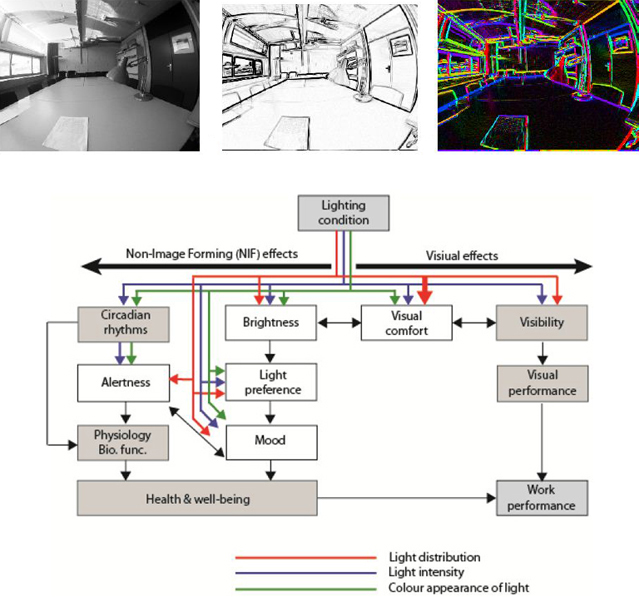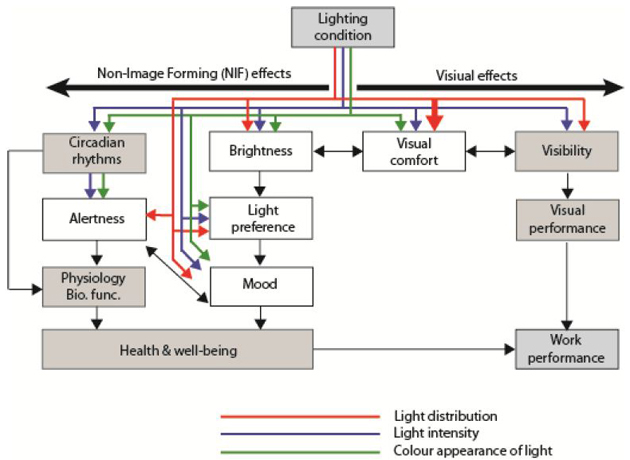
By Apiparn Borisuit, EPFL Solar Energy and Building Physics Laboratory, École polytechnique fédérale de Lausanne EPFL, Switzerland.
The Impact of Light Including Non-Image Forming Effects on Visual Comfort (PhD Thesis)
Visual comfort at workplaces has often been considered in terms of discomfort glare, luminance distribution and task visibility. Besides visual effects, the lighting environment has also impact on human physiology and behaviour. These effects of light are transmitted via a novel class of photoreceptors in the mammalian retina, which was discovered only a decade ago. Since then, it has become evident that light also plays an important role in regulating Non‐Image Forming (NIF) functions such as circadian rhythms, alertness, well‐being and mood. In lighting design it is accordingly necessary to take into account not only luminous intensity, but also light’s spectral composition, since the novel class of photoreceptors is more maximally sensitive to different luminous wavelengths than the classical photoreceptors (e.g. rods and cones).
The main focus of this doctoral thesis is on visual comfort assessment at workplaces. It was hypothesized that the impact of light on visual comfort comprises not only luminance distribution and/or luminous intensity, but also other qualitative aspects of the lighting environment. Office lighting influences building occupants in terms of visual task performance, alertness, health and well‐being. The aim of this thesis was to assess the impact of office lighting on visual comfort including NIF effects.
Conceptual model of visual and non‐visual systems impacted by the different physical light properties of light: impact of luminance distribution (red), luminous intensity (blue) and colour appearance of light (green), constituting the main hypotheses of the doctoral thesis
Firstly, in order to monitor the luminance distribution within a scene, a new photometric device based on a high dynamic range logarithmic visual sensor (IcyCAMTM) was set up. After calibrations and validations, the photometric device was used to assess luminance distribution of office spaces in a very efficient way. Secondly, two experimental studies were performed with human subjects, aiming to test the acute effects of light on visual comfort variables, subjective alertness, mood and well‐being. Lastly, the novel device was also used during one of the studies to monitor the impacts of luminous distribution over time and under various lighting conditions.
The novel photometric device enables to assess luminous distribution also in circadian metrics with respect to NIF effects of light. The results from the two studies showed the effects of office lighting including different sky conditions and time‐of‐day changes on visual comfort and NIF functions. Inter‐individual differences, as assessed in extreme chronotypes, also had an influence on visual comfort. Interestingly, luminance distribution was not only found to impact on visual comfort but also on subjective alertness, mood and well‐being. To conclude, the results obtained with the new device provide a more comprehensive scientific framework and practical basis for indoor lighting design at workplaces.
Image taken by CLLS with three different view options; a) the default image with the option “luminance”, b) image with the option “contrast ”and c) image with the option “orientation” .
Apiparn Borisuit defended her PhD thesis in December 2013. The entire dissertation can be downloaded at http://infoscience.epfl.ch/record/190815





